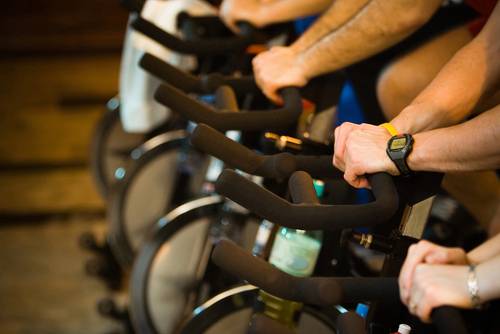I recently came across this study in the International Society of Sports Nutrition Journal.This study took eight elite gymnasts between twenty and 26 years old and placed them on a ketogenic diet. They measured body fat and the following performance tests: hanging straight leg raise, push up, parallel bar dips, pull up, squat jump, countermovement jump, and thirty-second continuous jumps.
The diet consisted of green vegetables, olive oil, fish, and meat, and virtually no carbohydrates. After thirty days significant losses were seen in body composition and weight with no difference in performance. The authors concluded a ketogenic diet may be beneficial to decreasing weight and fat mass without decreasing performance, but is this true?
The Study Participants and Exercises
First, let us look at the study group. The researchers took eight elite gymnasts under thirty years old. Does this accurately represent the vast majority of the population? The answer to that is most definitely no.
Also, look at this group and the exercises picked for the study. Those are exercises that elite gymnasts have probably been doing since they were five or six years old. The fact that they did not do better or worse on the tests does not surprise me. They have adapted to those stimuli. Think of the exercises you have done on a continual basis for a prolonged period of time, don’t they become easier? Try for a period of around twenty years or so.
Carbohydrates and Anaerobic Training
Carbohydrates are the only macronutrient that can be metabolized during high intensity, anaerobic training. In order to utilize fats as energy, the duration of exercise needs to increase and the intensity of the exercise needs to decrease. According to a study by Philips and Ziuraitis that was published in the Journal of Strength and Conditioning, a single-set, eight-exercise resistance-training protocol is feasible for achieving moderate-intensity physical activity in a sample group of similar aged males as used in the ketogenic diet study. Moderate-intensity physical activity is performed at approximately 70% of VO2 max. This is hardly anaerobic. Thus, these exercises are not metabolically taxing, especially to a group of elite gymnasts who have done exercises like these their entire lives.
 Many studies have described the opposite of this one in terms of carbohydrate intake and anaerobic work performance. A study by Langfort and colleagues took eight healthy subjects and put them on a bike test (thirty-second Wingate test). The participants did these for three days with 50% carbohydrates and for three days with 5% carbohydrates. The conclusion was, “LCD is detrimental to anaerobic work capacity…” LCD being a low-carbohydrate diet. This is most likely due to the decrease in muscle glycogen, as this bike test was anaerobic.
Many studies have described the opposite of this one in terms of carbohydrate intake and anaerobic work performance. A study by Langfort and colleagues took eight healthy subjects and put them on a bike test (thirty-second Wingate test). The participants did these for three days with 50% carbohydrates and for three days with 5% carbohydrates. The conclusion was, “LCD is detrimental to anaerobic work capacity…” LCD being a low-carbohydrate diet. This is most likely due to the decrease in muscle glycogen, as this bike test was anaerobic.
This study also showed enhanced sympathoadrenal activity in the low carbohydrate group. This is also seen in infants with diabetic mothers. This is believed to be linked to low catecholamine levels throughout life.3 Our catecholamines are responsible for energy, mood, memory, focus, and attention.
Low Carbs and Cortisol
The gymnasts did lose body fat and weight. Is this a good thing? I picture gymnasts as already pretty lean. I would have liked to see some cortisol numbers because my guess is they were probably a little stressed due to the low carbohydrate intake. This would be feasible considering the other studies showed an increased sympathoadrenal activity.
The literature has also shown that low carbohydrate diets can increase cortisol levels. In this one study a 10% carbohydrate diet increased cortisol levels the most.4 This study did not mention any exercise in the methods. I would hypothesize that if exercise was added to the groups the cortisol levels would have raised even higher.
Another study looked at wrestlers, performance, weight loss, and low carbohydrate dieting. With the weight loss associated with low carbohydrate dieting there was decreased mood and increased fatigue.5 The gymnastics study did not record the mood of the athletes. There was no increase in performance in the gymnastics group, but instead it remained constant. Remember these exercises are more than likely easy for them to perform. I would like to know how they would perform in a typical gymnastics meet. Increased cortisol, increased fatigue, and poor mood are all likely to negatively affect performance.
Carb Cycling
 I do believe a cyclic low-carbohydrate approach may work well for many people and even some sports. I personally promote a cyclic low-carbohydrate diet to those people looking to lose weight, with the majority of their carbohydrate intake coming in the meal following a workout. For those of you who partake in glycolytic taxing sports, I would highly recommend you keep some carbohydrates in your diet. We want to make sure that muscle glycogen, our stored form of glucose, stays full to maximize recovery and performance.
I do believe a cyclic low-carbohydrate approach may work well for many people and even some sports. I personally promote a cyclic low-carbohydrate diet to those people looking to lose weight, with the majority of their carbohydrate intake coming in the meal following a workout. For those of you who partake in glycolytic taxing sports, I would highly recommend you keep some carbohydrates in your diet. We want to make sure that muscle glycogen, our stored form of glucose, stays full to maximize recovery and performance.
How do you eat to fuel your performance? Have you you experimented with low-carb or carb-cycling protocols?
References:
1. Langfort, J, et al., “The effect of a low-carbohydrate diet on performance, hormonal and metabolic responses to a 30-s bout of supramaximal exercise,” European Journal of Applied Physiology and Occupational Physiology (1997). Retrieved on December 5, 2013.
2. Phillips WT and Ziuraitis JR., “Energy cost of the ACSM single-set resistance training protocol,” Journal of Strength and Conditioning (2003). Retrieved on December 5, 2013.
3. Artal, R, et al., “Sympathoadrenal activity in infants of diabetic mothers,” American Journal of Obstetrics and gynecology (1982). Retrieved on December 5, 2013.
4. Ebbeling, Cara, et al., “Effects of Dietary Composition on Energy Expenditure During Weight-Loss Maintenance,” JAMA (2012). Retrieved on December 5, 2013.
5. Horswill, C.A., et al., “Weight loss, dietary carbohydrate modifications, and high intensity, physical performance,” Medicine and Science in Sport and Exercise (1990). Retrieved on December 5, 2013.






